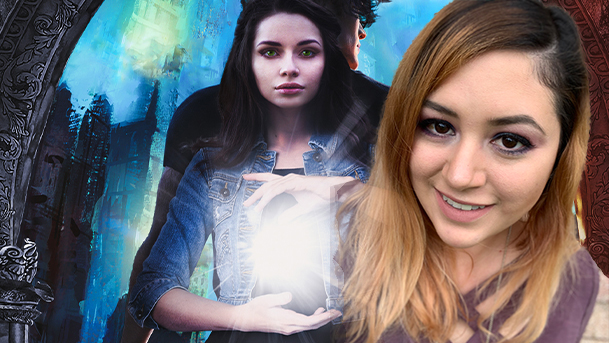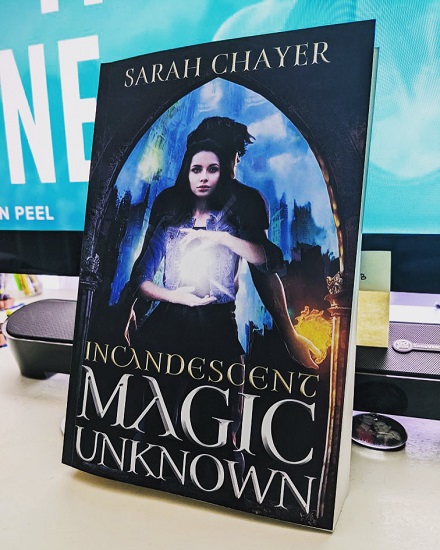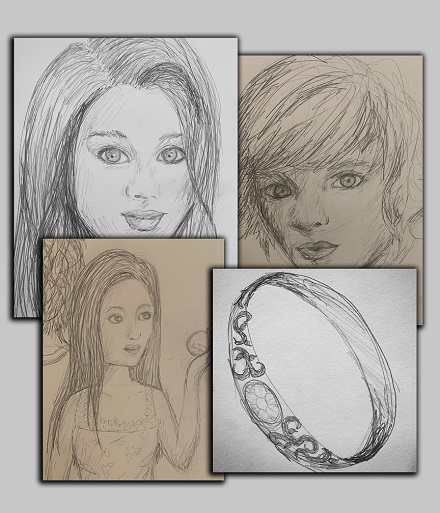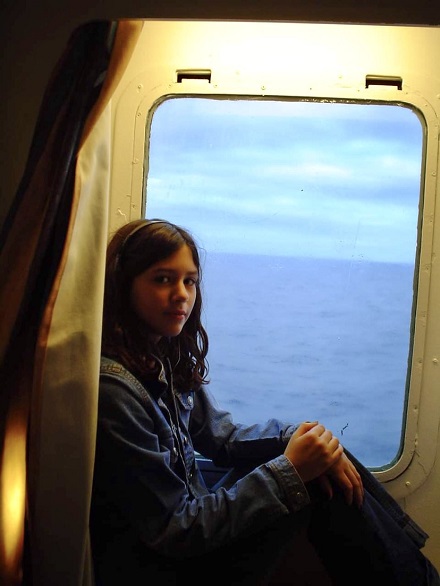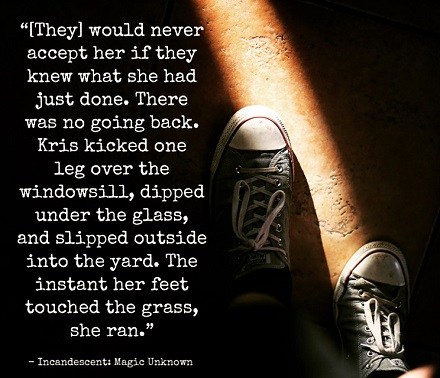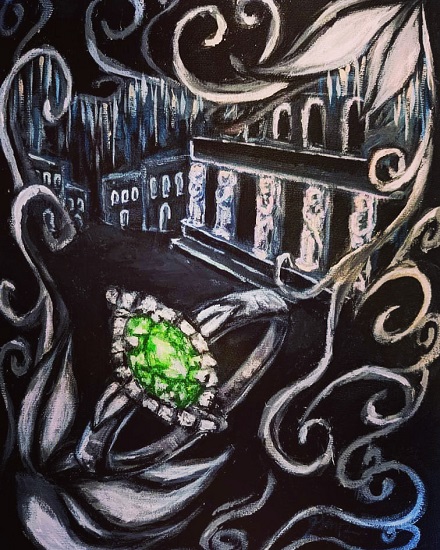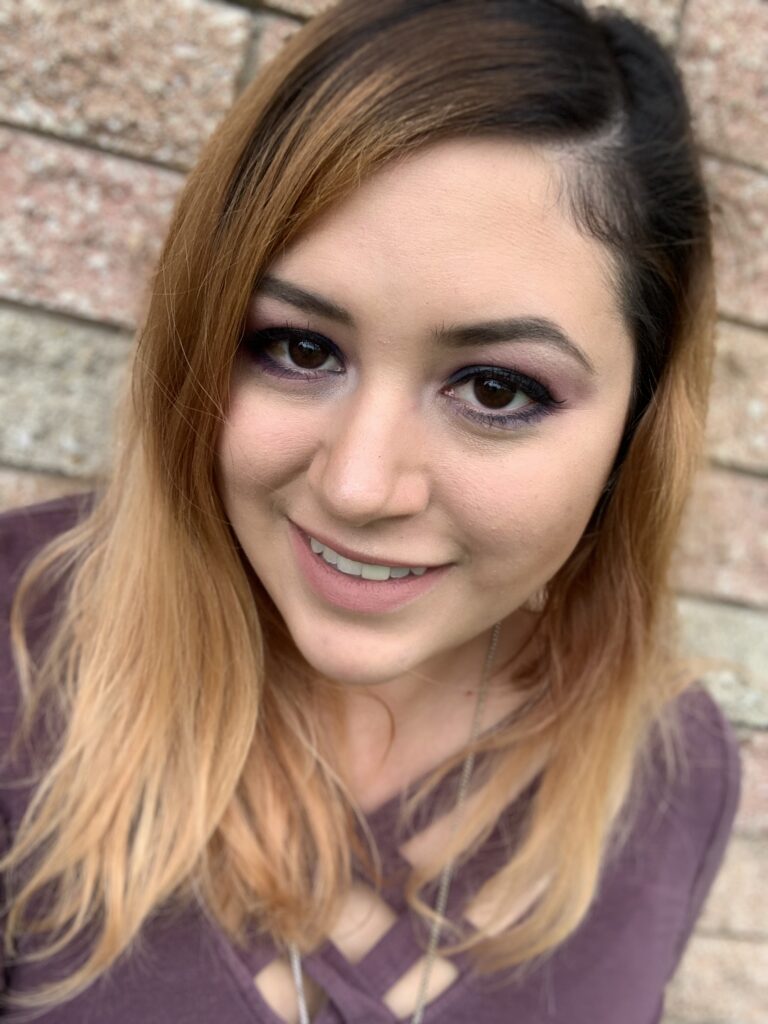Last week, we had the chance to tell you all about a wonderful storyteller who had been working on their work for a long while and had finally unleashed it into the world. Sarah Chayer has published her first book, and it looks like she now shows no signs of stopping anytime soon. Read on to learn more about Sarah and the worlds that she creates.
Tellest: Hello Sarah! First, I’d like to congratulate you for bringing your book into the world. I know that you’ve been working on it for a long time, so to see it on shelves both virtual and physical must be incredibly exciting. I’d also like to thank you for taking some time to talk to me about the worlds you’re building. You’re already putting together sequels and a separate series, so being able to get even a few minutes to talk to you feels like a wonderful opportunity.
Sarah Chayer: Thank you for having me! Yes, getting my novel self-published has been a long road, but finally having it done and out there after nearly two decades of work and passion is incredible!
T: It’s one of the first things I ask, but I find it helps readers learn just what kind of storyteller they may be starting to enjoy. When it comes to inspirations, what were yours? What led you to begin telling stories, to spend years creating and refining a story that you could be proud of. Did you have a favorite author growing up, or perhaps another talespinner in the family or community?
SC: While I’ve never been a big reader myself, I have always enjoyed story-telling. I used to write a lot of supernatural short stories as a kid as a fun form of self-expression while also indulging my desire for fantasy. For this particular book, I did take some inspiration from Marvel’s X-men and the “Twitches” book series by H.B. Gilmour and Randi Reisfeld, but I tend to pull a lot from music. When I’m on a long car ride, I put on some of my favorite artists and just lose myself in it, thinking “which of my characters might experience what this song is about?” For example, William Ryan Key’s EP “Thirteen” inspired major changes in one of my main characters during my final drafts.
T: Not all of the characters we write have experienced life the way that we do. Have you ever pursued wildly different genres than you’re used to in order to get into the head of a character?
SC: I’ve dabbled in a lot of different styles of writing, everything from prose, to songwriting, to screenplays. That said, I’ve written short stories for several “Incandescent” characters that I have no intention of ever publishing, but I used as exercises to delve deeper into a character’s mind and backstory. It makes it easier for me to insert the character into the main story with their own unique personality, habits, communication style, etc. When characters have backgrounds so completely different from my own, I definitely invest a lot of time and energy researching to make sure I make them feel as real and authentic as possible.
T: Which of your characters was the one that surprised you the most, and how did that writing session turn out for you?
SC: Truthfully, all of my main characters, including the antagonist, changed after writing my short “backstories.” But the one that came most organically and surprised me the most was Larsen. One day while driving and thinking about my book, something just clicked. I don’t want to give anything away, so I’ll be vague and just say I realized something about Larsen I should have known all along. It just fit so perfectly I didn’t even need to alter much about him, but discovering it allowed me to flesh him out as a more well-rounded character rather than just a one-dimensional supporting cast member.
T: I mentioned it a little bit earlier in this interview, but what leaves you feeling like a markedly different kind of author is just how long you kept at it when it comes to your first book. It pays off, as well, because you can see how refining it has led it to come out feeling like the work of a professional with a large catalog of books—not just a debut author. How did your experience taking the time to make sure your story was released right affect you?
SC: I wrote the very first draft of this story when I was maybe ten years old. Honestly, I only started writing it because my sister and I shared a computer at the time, and I was tired of her hogging it, so I needed an excuse to use it more. That first draft was rubbish, but I enjoyed it enough to write two other stories in that series. And when those were done, I realized I wasn’t finished with it. There was some good that I could rework and make better. So during a summer abroad in Europe when I was about twelve, I wrote out by hand my second draft from scratch. And when it was done, I reread it and thought, nope, I can make this better. Third draft. There was always something else I could fix. A scene. A character. A subplot. It was frustrating but also exciting. I could see myself improving as a writer with each revision. I felt proud of how much I had grown, but I could also see that there was still room to grow, and I’m grateful for that. It means I will never tire of writing.
T: Do you fully expect to turn around a decade from now and realize that you could have made this change, or added this character or that sort of thing? I feel as though most writers always maintain a sort of self-loathing. And that’s not to say that our work is bad, just that we find new standards to hold ourselves to.
SC: Even in the month or so since I published, I’ve already thought of a few changes I wish I had made in my book to better set up the sequel, and I’m sure in the years to come there will be more details I will wish I had done differently, but I am proud of my work. And I look forward to the many changes I will make, and will wish I had made, to my future publications.
T: I don’t know anything about your sister, but I imagine this is something you can lord over her. All that time on the computer when you were young actually amounted to something pretty big!
SC: My sister is my hero. She’s been with me through the entire process of creating this book. She was there fighting me for the computer way back in the day. She was there in Europe when I was hand-writing my second draft in a notebook with the pages falling out. She read through my final draft before anyone else, and spent well over an hour with me on the phone talking through vital plot points and scenes to ensure I sent my editor the best version possible. She even offered to take a stab at creating the cover art as she is an incredibly talented artist. [see attached concept art painting]
Words can’t express how much I love my sister. She’s the one that made all of this possible.
T: Then in that case your sister must be incredibly proud of you. Writing and publishing a book is a huge accomplishment. Have you had any other friends or family lend a big part of themselves to the story’s creation in some way?
SC: At the time I was finally ready to commit and push forward to start the publishing process, I was struggling quite a bit financially and with confidence. I launched a GoFundMe in hopes that a couple friends might donate to help, but I had no idea the amount of support I would receive. Of course, my sister donated. As did my parents and my husband. And then my online community of friends just poured in. It was incredible. They had me literally ugly crying, overwhelmed with disbelief and joy. I included a thank you to everyone who donated at the start of my book, but I still don’t think I can ever thank them enough for believing in me and encouraging me to achieve my life-long dream.
T: There are plenty of people out there who want to write a book, or tell a story in some way or another, and they get in their own way and never find the means to do what you did. What advice could you give them to help them start their own storytelling journey?
SC: Stop researching, and just write. Throw some words on the page. It doesn’t have to be perfect, heck you don’t even have to keep what you write, but often I’ve seen people spend so long plotting and planning that they never start. You can always go back and do more research, or change things, but just start. You’d be amazed what you can create without over-thinking.
Having someone to discuss your story with and bounce ideas off of is also a great help.
T: You mentioned having someone to share your story with. Do you recommend a set of super fans, a writing group, or something else altogether?
SC: I have recently assembled a small group of friends who love and want to pursue their passion for writing in an effort to set goals, keep each other motivated, and bounce ideas off of each other. Given the busy schedule of adults these days, that has proven a bit challenging, but I also have my sister to help with advice. And now that the book is out, I have a few friends who are enthusiastic about the story whose brains I can pick regarding the future sequels. Sometimes I don’t even need feedback. I just need someone to talk “at” until I reach my own solution.
T: Your Incandescent series doesn’t just end with the first book. What did you have in mind for the follow-ups, and how long have you been imagining where things go next?
SC: “Incandescent: Magic Unknown” was originally only supposed to be a one-off book. I didn’t plan on making a sequel. But while writing my final first draft last year, I realized I could do better for my characters. I wanted more for them, and I knew there was more I could do with the world I had built. I had often imagined scenarios in my head of what would come next just for my own head-cannon, so I decided to change my ending and leave it open to the possibility of a sequel or two, while still not fully committed to the idea. My sister read the draft before I sent it to my editor, and she responded, “What the heck is wrong with you?! Ending a book like that and not doing a sequel?!” So, I decided, alright, I guess I will get to know these characters a little better because I’m doing the sequel.
Without giving anything away, the first book focuses a lot on building this strong, surrogate family, and in the sequels, I want to continue building on those relationships and let the characters grow individually, both in positive and negative ways. And of course, we will be exploring new types of magic as well.
T: Especially with a series, you’re likely to end up with fans who don’t ever want to see an end. Can you see yourself wrapping back around to this world you’ve built to explore other corners of the setting?
SC: I have solid plans for three works in the Incandescent series, but I’m open to giving some characters a spin-off novella to provide some of the extra insight I’ve got in my head canon that doesn’t fit into the main story. With my second series though, I envision doing at least four books with the possibility of adding more.
T: With so many stories taking shape in your head, this isn’t likely a problem you’re likely to see, but what is your process for tackling something like writer’s block?
SC: I definitely hit walls sometimes, as everyone does. I let writer’s block consume a fair chunk of time while I was struggling a few years ago, but the most important thing I could do was keep working. Even if I couldn’t get past the point I was stuck at, I would reread past chapters and make edits. I have also just changed gears and switched back to the second series sometimes. It kept me motivated, and then I would eventually return to “Incandescent” with fresh eyes.
T: Incandescent isn’t the only story you’re working on either. Are you able to give any hints about the second series you’re working on? Is that also an urban fantasy?
SC: The second series I am working on is actually a revised version of a comic book series I started when I was a kid. It is also an urban fantasy story about two parallel dimensions, one is our normal world and the other contains magic, and they are both connected by a portal. The series will revolve around a group of teenage girls from the modern world who each receive their own unique, elemental powers after encountering the portal to the magical world. There is still a lot of work to do on that series, but like Incandescent’s first book, this story has been through several rewrites and revisions over the years. I’m excited to see how it shakes out.
T: When you’re working on multiple projects within the same genre, is there ever any bleed-through, either consciously or unconsciously? How do you decide what to keep in one world, and what to keep in another?
SC: I toyed with the idea of trying to connect the two universes I am currently creating, and there were some ways I could have achieved that, but I ultimately decided to keep them both separate as to not limit myself with what is possible in either series. I have unwittingly taken some traits I had planned for other characters, which will require some modifying in future books, but it worked out so well, I’m not upset. It just means I get to know a character all over again.
Regarding the fantasy elements though, I do face a challenge of ensuring the magic in the separate series is unique and they don’t feel derivative. It will be interesting to see if readers prefer one to the other.
T: When you’re working on your stories, do you ever imagine them in another medium, like the comic book series you mentioned earlier, or perhaps like a movie, imagining your characters running around in your head?
SC: I do love the graphic novel medium as I think it is an interesting way to visually tell a story, but not something I envision for this series. I have, however, often thought “if this is ever made into a movie, I would want…” In fact, I already have a verbal agreement with one of my friends to write the music score should the day ever come when my book gets a film adaptation. I’m not holding my breath, nor is that something I am pursuing, but it would be cool.
T: You majored in Communication with an emphasis on Journalism. I’m curious about how you feel about journalism, the pursuit of truth, alongside your fictional work, where sometimes it feels like it’s much easier to be enthusiastic about the made-up and make-believe.
SC: While I definitely favor a bit of fantasy in my writing, I do also like to indulge the analytical side of my brain. I opted for journalism as my major as a means to incorporate my passion for writing into a more stable career, and I have always found academic writing comes very naturally to me. But I do enjoy research. I can’t tell you how much research I’ve done on even minute details for Incandescent, like meanings behind different gem stones, types of trees by region, or various mental health disorders. I like learning new things, so being able to take that and apply it to my fictional work is actually super fun.
T: Do you try to just remember that information, or have you found a way to catalog it for easy access if you need to bring it up in other projects in the future?
SC: I do keep several Pinterest boards full of articles and websites with information I can see useful for future works, and I have referred back to some of these already. Some boards are very broad, containing writing tips, while some are for specific books or specific characters.
T: Besides your prose stories, you also write poetry. Which do you find more challenging? Have you found a way to make both work in tandem with one another?
SC: I love poetry. I won’t claim to be the best at it, but I love how poetry has a rhythm to it and how keeping something short forces me to make every decision more meaningful. You have to say more with fewer words, so every word, every punctuation mark, is a deliberate choice. Writing poetry is definitely more challenging for me as I sometimes struggle with keeping my writing short and sweet, but it’s a challenge I adore, nevertheless.
I sometimes apply my poetic style when writing my fictional work. I play with sentence structure a lot to create these rhythms to express the mood of a scene. Sometimes short fragments. Sometimes long, flowing sentences. It can help give a passage a little extra punch.
T: If someone wanted to learn more about you and your stories, where could they go?
SC: I do have a website, which is still relatively bare right now as I am still getting my footing as a published author, but if anyone wanted to learn more about me or my future works, they can go to www.sarahchayer.com, it contains links to all my social media as well as my Amazon listing for “Incandescent: Magic Unknown.”
T: Sarah, I wanted to thank you for the taking the time to illuminate some of the things about you that fans will no doubt be dying to know. There’s a good chance that you’re going to be someone’s favorite fantasy author, and it’s been an honor to draw back the curtain a little bit and see who is at the heart of this writing.
SC: Thank you again for having me. It’s been wonderful talking with you. I hope we get to chat again when I release the sequel!
Once more, I want to thank Sarah for her time. As you can tell from reading the interview, she does a lot with her time, so using some of it to chat with us felt like a very nice opportunity. If you’re interested in what you’ve heard about Chayer and her work, you can head to her website, or check out Incandescent: Magic Unknown on Amazon!
Michael DeAngelo
Latest posts by Michael DeAngelo (see all)
- Fantasy Promo – Quinine - July 25, 2024
- Sigil Art – Grim’s Hold - July 24, 2024
- Fantasy Promo – Light the Shadows (Under Elfhame’s Stars) - July 24, 2024
